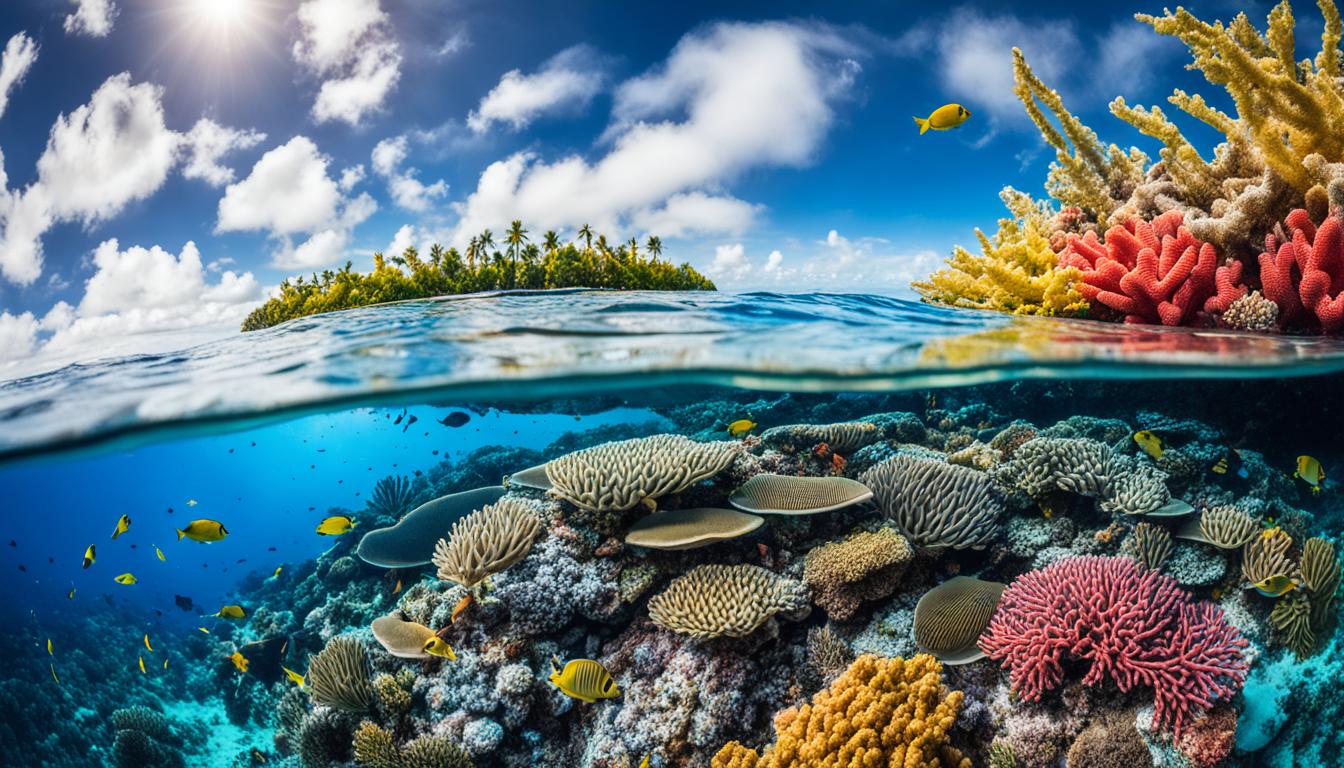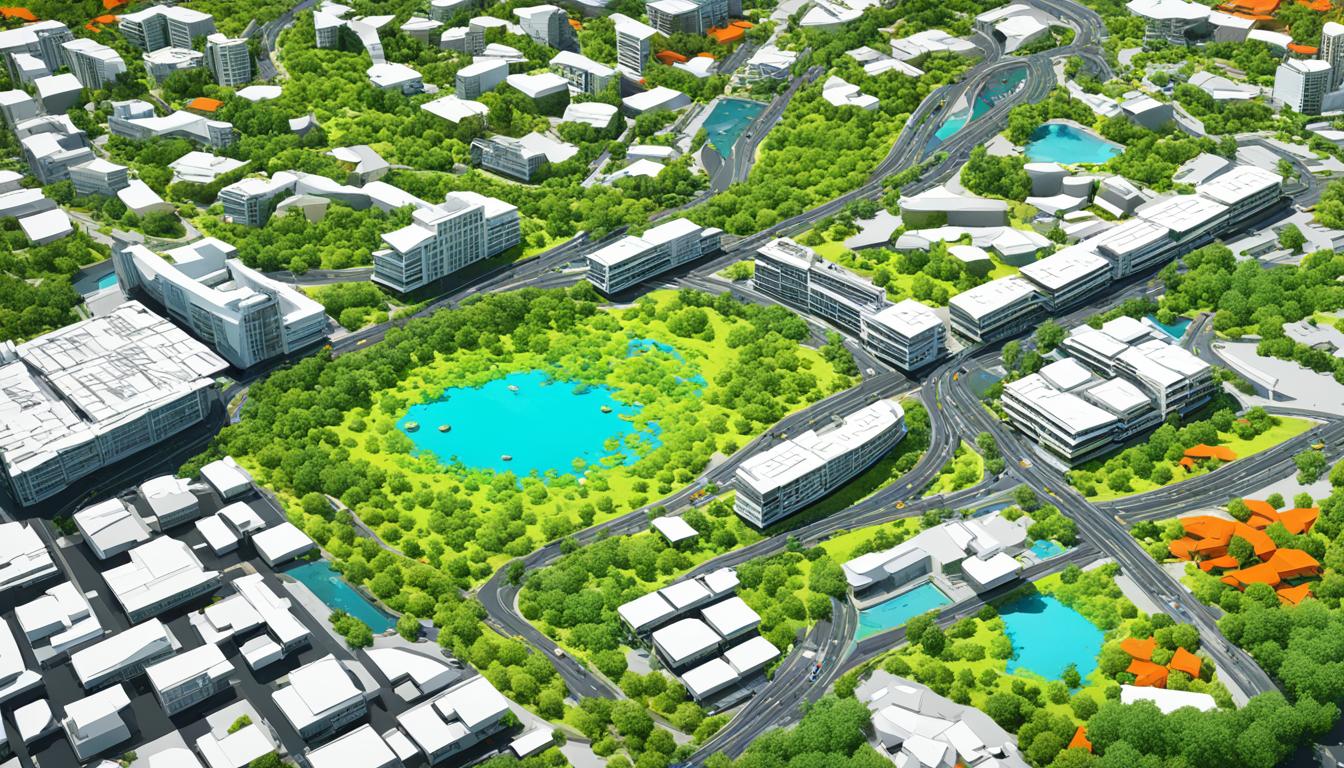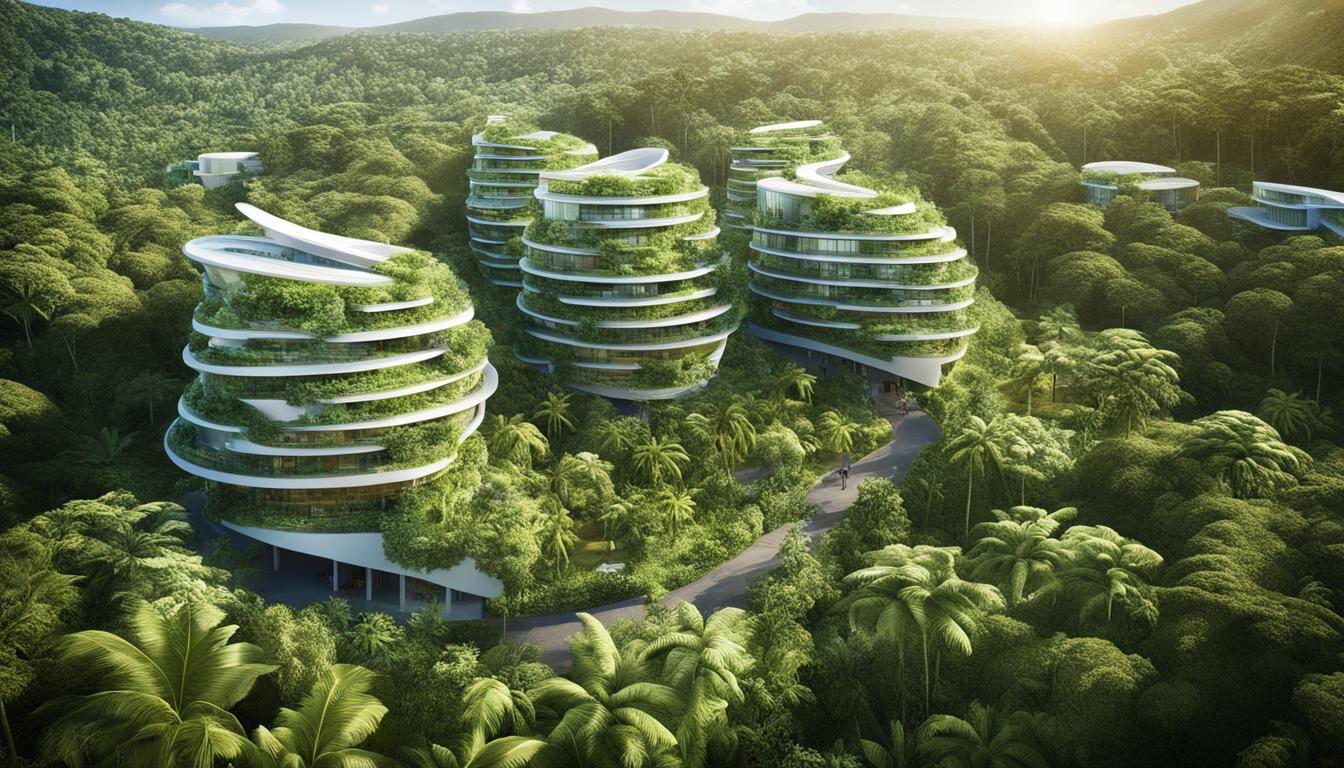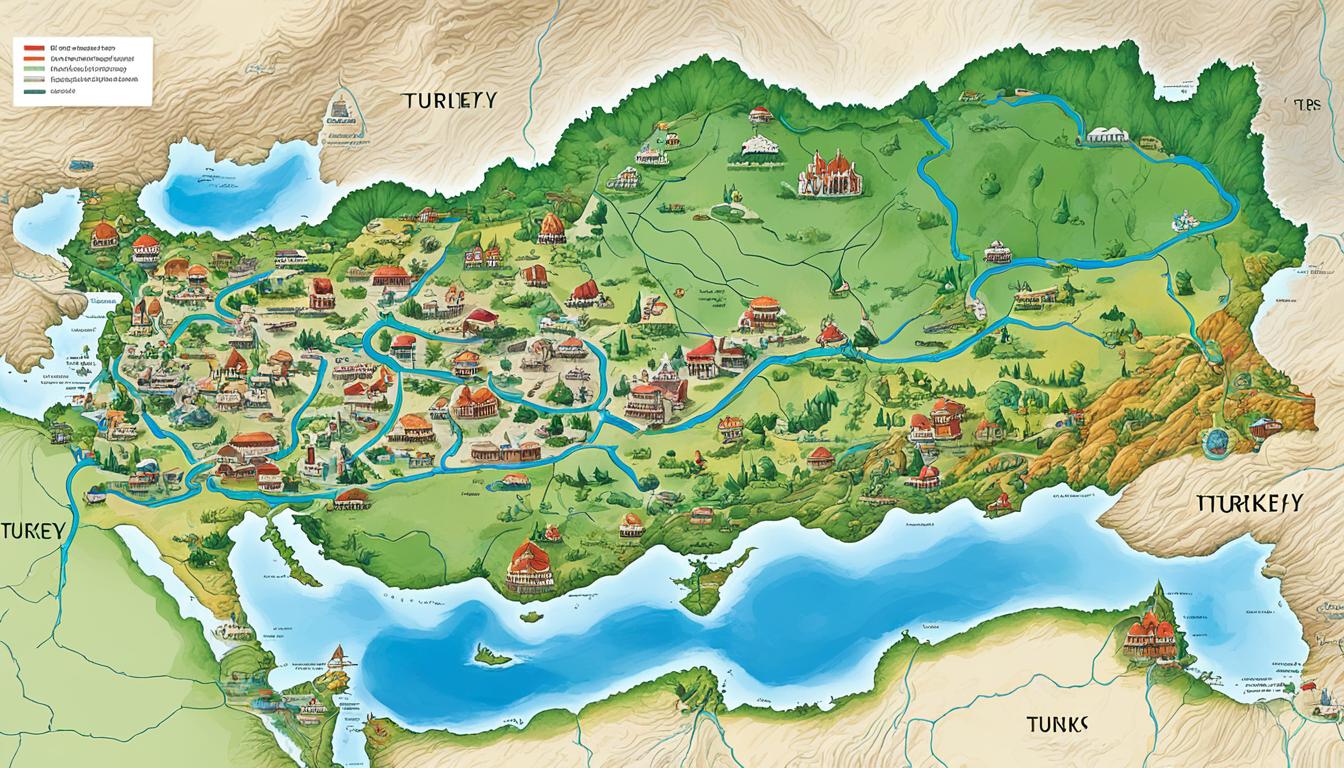Mauritania Biodiversity and the Built Environment
Did you know that Mauritania is home to over 2,300 plant species? That’s an astonishing number of diverse plant life thriving in this West African country. The biodiversity of Mauritania encompasses not only plants but also a wide range of animal species, making it a unique and valuable natural heritage. However, the conservation of this biodiversity and its integration with the built environment pose significant challenges.
In this article, we will explore the importance of conserving Mauritania’s biodiversity and the strategies needed to achieve sustainable development and urban planning. We will delve into the concept of ecological balance, understand the significance of environmental impact assessments, and analyze the management of natural resources. Furthermore, we will explore how the integration of green infrastructure can enhance ecosystem services and promote a harmonious relationship between the built environment and the biodiversity it supports.
Key Takeaways:
- Mauritania is home to over 2,300 plant species, highlighting the incredible biodiversity of the country.
- Conservation strategies play a crucial role in protecting Mauritania’s biodiversity and promoting sustainable development.
- Ecological balance is essential for maintaining the stability of ecosystems and preserving valuable ecosystem services.
- Environmental impact assessments help evaluate the potential environmental consequences of built environment projects and guide decision-making processes.
- Effective management of natural resources is necessary for the long-term sustainability of Mauritania’s biodiversity and the built environment.
- Green infrastructure offers opportunities to enhance ecosystem services, mitigate environmental impacts, and promote sustainable urban planning.
The Importance of Biodiversity in Mauritania
Biodiversity plays a crucial role in maintaining the ecological balance in Mauritania. The diverse range of plant and animal species ensures the stability of ecosystems and provides essential services, such as pollination and nutrient cycling. The preservation of biodiversity is essential for sustainable economic development and environmental protection.
The intricate web of life in Mauritania relies on the interdependence of various species. Each organism, from the smallest insects to the largest mammals, contributes to the functioning of ecosystems and the provision of ecosystem services. These services include water filtration, soil fertility, pest control, and carbon sequestration.
Biodiversity provides a myriad of benefits to both human societies and the environment. For example, diverse plant species contribute to the production of food crops, medicines, and raw materials for various industries. Additionally, animal species play a vital role in balancing natural ecosystems by controlling prey populations and aiding in seed dispersal. By maintaining biodiversity, Mauritania can ensure a sustainable supply of natural resources and safeguard the ecological processes that support life on Earth.
Furthermore, biodiversity is closely linked to the concept of ecological balance. When an ecosystem is in balance, the different species within it coexist harmoniously, each fulfilling their unique roles. This equilibrium provides stability and resilience, allowing the ecosystem to adapt to environmental changes and disturbances.
“Biodiversity is the bedrock upon which all life on Earth depends. The variety of species and ecosystems we have in Mauritania is invaluable, and it is our responsibility to protect and preserve it for future generations.”
— Dr. Aminata Kane, Environmental Scientist
Unfortunately, human activities, such as deforestation, urbanization, and the introduction of invasive species, pose significant threats to biodiversity in Mauritania. These activities disrupt natural habitats and reduce the availability of resources for native species, leading to their decline. Climate change also exacerbates these challenges, altering ecosystems and pushing species towards extinction.
It is crucial to address these threats and promote the conservation of biodiversity in Mauritania. By implementing sustainable land management practices, protecting critical habitats, and raising awareness about the importance of biodiversity, we can strive towards a future where humans and nature coexist in harmony. Additionally, integrating ecological considerations into decision-making processes, such as urban planning and environmental impact assessments, can help ensure that development activities do not further degrade our natural heritage.
Preserving biodiversity is not only an ethical imperative but also an essential component of sustainable development. By recognising and protecting the ecological services provided by diverse ecosystems, we can secure a better future for ourselves and future generations.
Animal Species in Mauritania
Mauritania boasts a remarkable abundance of animal species, comprising a diverse range of mammals, birds, reptiles, and amphibians. These fascinating creatures, both endemic and migratory, contribute to the country’s extraordinary biodiversity and are integral to its ecological balance.
However, the animal species in Mauritania face multiple threats, including habitat destruction and poaching. Human activities, such as agriculture, urbanization, and logging, encroach upon their habitats, leading to the loss of critical ecosystems.
“The rapid urban expansion in Mauritania is posing a significant threat to wildlife species, as their habitats are being rapidly destroyed. Urgent conservation efforts are required to protect these invaluable creatures before it’s too late.”
To ensure the survival of these valuable species, conservation efforts are being implemented across Mauritania. The establishment of wildlife sanctuaries and protected areas plays a crucial role in safeguarding the habitats of endangered animals, providing them with a safe haven to thrive and reproduce.
In these protected areas, stringent measures are in place to combat illegal hunting and the poaching of vulnerable species. Conservation organizations, government agencies, and local communities collaborate in their efforts, employing surveillance systems and strict regulations to monitor and prevent any harm to the animal populations.
By protecting and preserving these animal species, wildlife sanctuaries contribute significantly to the conservation of Mauritania’s biodiversity and its ecological integrity.
Endangered Animal Species in Mauritania
| Animal Species | Status |
|---|---|
| Adrar Dama Gazelle | Critically Endangered |
| Mauritanian Adder | Endangered |
| Saharan Cheetah | Endangered |
| Mauritania Owl | Endangered |
| Mauritania Moussier’s Redstart | Vulnerable |
| Barbary Macaque | Vulnerable |
The presence of these endangered and vulnerable animal species highlights the urgent need for continued conservation efforts and the establishment of additional wildlife sanctuaries. Through these initiatives, Mauritania seeks to safeguard its unique wildlife heritage and preserve its ecological balance for future generations.
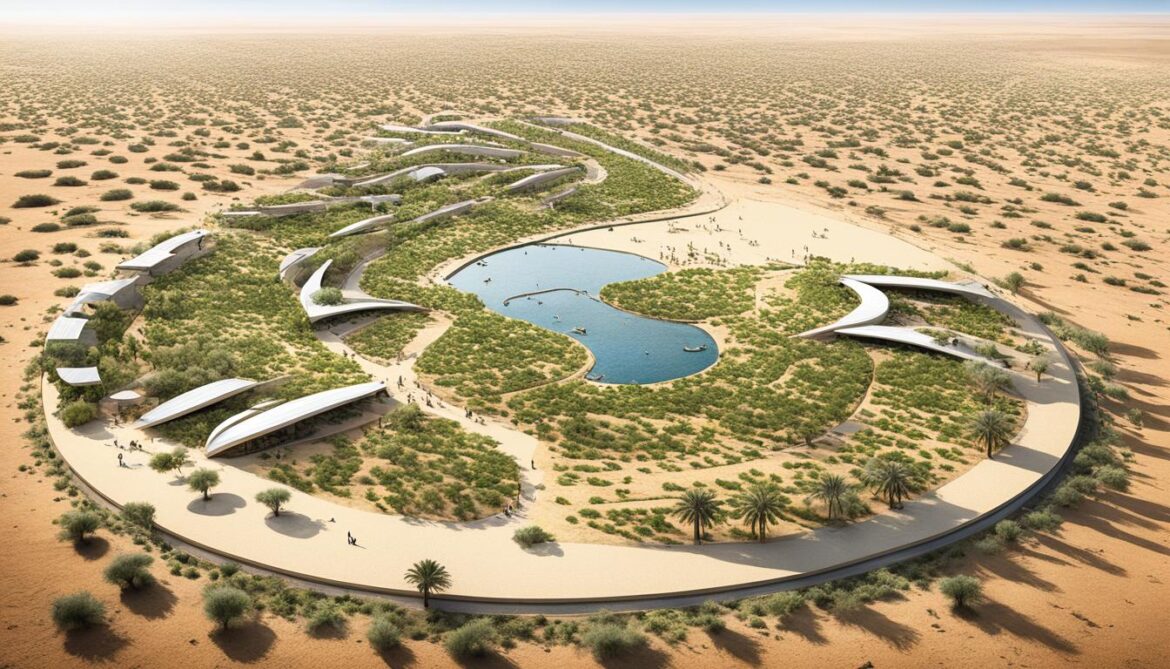
Plant Species in Mauritania
Mauritania is blessed with a diverse array of plant species, including trees, shrubs, grasses, and flowers. These plants not only add beauty to the landscape but also play a crucial role in supporting the country’s ecosystems and providing essential ecosystem services.
However, the survival of these valuable plant species is under threat due to habitat loss caused by human activities and the impact of climate change. Deforestation, agriculture expansion, and urbanization are leading to the destruction of natural habitats, putting many plant species at risk of extinction.
To combat the loss of plant species and preserve Mauritania’s rich biodiversity, conservation efforts are of utmost importance. Sustainable land management practices can help mitigate habitat loss and ensure the survival of plant species. Reforestation initiatives can restore degraded areas and create new habitats for plants to thrive.
Collaborative efforts between government bodies, local communities, and environmental organizations are essential for implementing effective conservation strategies. These efforts involve raising awareness about the importance of plant species, promoting sustainable practices among stakeholders, and enforcing regulations to protect natural habitats.
Conservation Efforts for Plant Species in Mauritania
In recent years, Mauritania has made significant progress in conserving its plant species through various initiatives. Here are some notable conservation efforts:
- Establishment of Protected Areas: The creation of protected areas, such as national parks and nature reserves, provides a safe haven for plant species and helps safeguard their habitats. These protected areas are closely monitored and managed to maintain ecological balance and prevent further habitat loss.
- Community-Based Conservation Projects: Engaging local communities in conservation activities is crucial for the long-term preservation of plant species. Projects that involve community participation, such as community-led reforestation efforts and sustainable land management practices, empower individuals to protect their natural surroundings.
- Research and Monitoring: Conducting scientific research and monitoring plant species is essential for understanding their ecological requirements and assessing their conservation status. By gathering data on plant populations and distribution, conservationists can make informed decisions and prioritize conservation efforts.
By implementing these conservation measures and increasing public awareness about the importance of protecting plant species, Mauritania can ensure the preservation of its unique and invaluable flora for future generations.
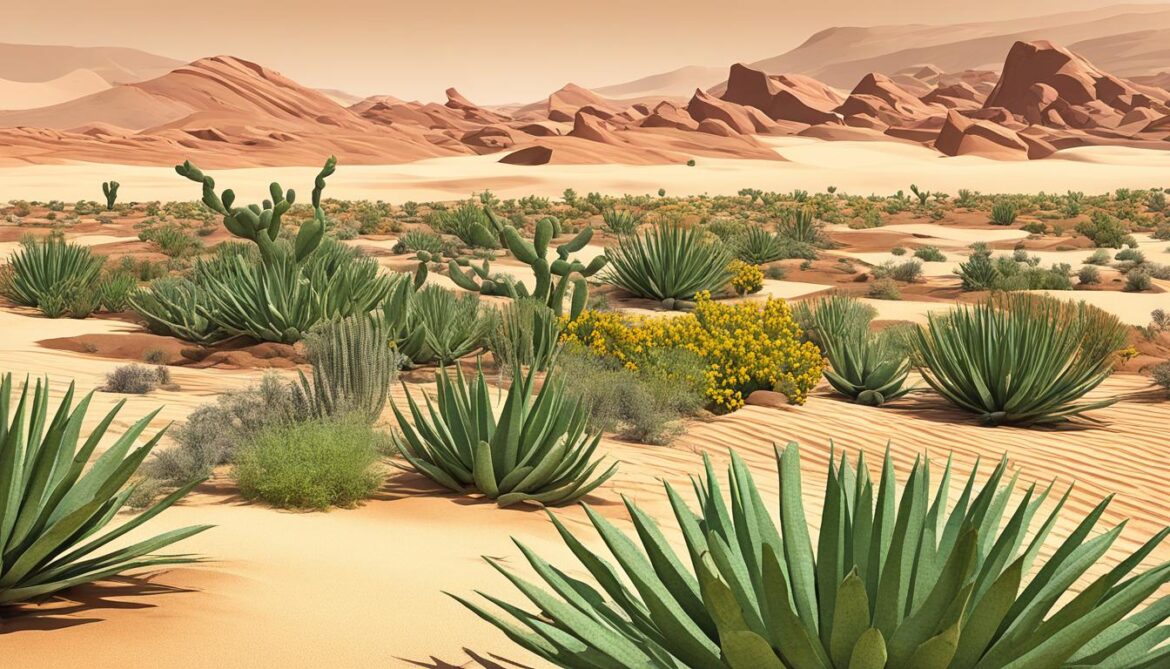
“The true wealth of a nation lies not in its monetary riches but in its natural heritage—the intricate tapestry of plant species that sustains life and provides countless benefits for generations to come.” – Conservationist Jane Goodall
Threats to Biodiversity in Mauritania
Mauritania’s rich biodiversity is under threat from various factors that disrupt the delicate ecological balance and endanger numerous species. Conservation efforts, including sustainable land management and strict regulations, are crucial in mitigating these threats and protecting Mauritania’s valuable biodiversity.
Habitat Loss
Habitat loss due to agriculture and urbanization poses a significant threat to biodiversity in Mauritania. As human populations grow and demand for resources increases, natural habitats are being cleared and fragmented, leading to the displacement and decline of many plant and animal species. The loss of habitats not only affects individual species but also disrupts entire ecosystems, impacting their ability to provide essential services, such as carbon sequestration, water filtration, and soil fertility.
Climate Change
Climate change is another major threat to Mauritania’s biodiversity. Rising temperatures, changing rainfall patterns, and increased frequency and intensity of extreme weather events alter ecosystems and disrupt natural processes. These changes can lead to the loss of keystone species, reduced availability of resources for wildlife, and increased vulnerability to diseases. Climate change also exacerbates existing stressors, such as habitat loss and degradation, further compromising the survival and resilience of many plant and animal species.
Illegal Hunting
Illegal hunting poses a significant threat to Mauritania’s biodiversity, particularly to charismatic and economically valuable species. Poaching for bushmeat, trophies, and the illegal wildlife trade has decimated populations of iconic species like elephants, rhinoceroses, and big cats. It also affects lesser-known species that play critical roles in maintaining ecosystem dynamics. Illegal hunting disrupts natural food chains, alters predator-prey relationships, and can lead to imbalances in ecosystems.
Conservation Efforts
Despite the threats facing Mauritania’s biodiversity, conservation efforts are being undertaken to protect and restore ecosystems, conserve endangered species, and raise awareness about the importance of biodiversity. Sustainable land management practices, such as reforestation, habitat restoration, and the promotion of sustainable agriculture, are being implemented to counteract habitat loss and degradation. Strict regulations and law enforcement are being strengthened to combat illegal hunting and trade. Additionally, national and international organizations are collaborating with local communities to support conservation initiatives and promote sustainable livelihoods that provide alternatives to exploiting natural resources.
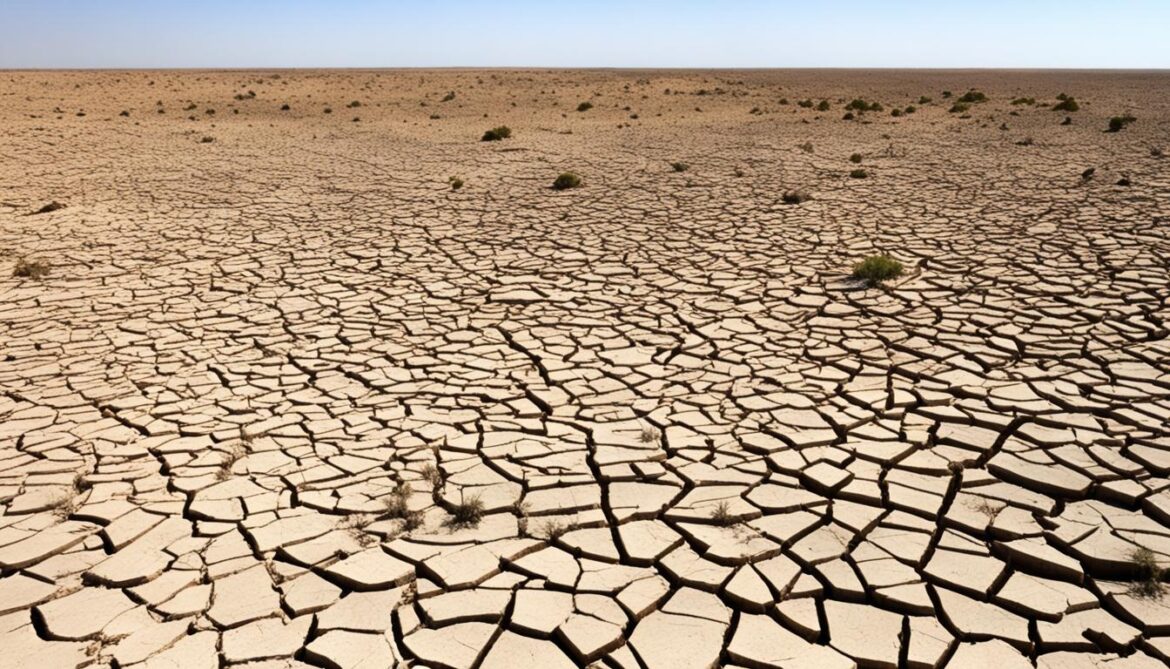
Conservation Efforts in Mauritania
Mauritania is dedicated to preserving its diverse biodiversity through a range of conservation efforts. The government recognizes the importance of protecting critical habitats and has established wildlife sanctuaries and protected areas across the country. These sanctuaries serve as safe havens for endangered species, allowing them to thrive and ensuring their long-term survival.
Collaboration is key to the success of conservation initiatives in Mauritania. International organizations, non-governmental organizations (NGOs), and local communities are actively working together to promote conservation, raise awareness, and implement sustainable strategies. By joining forces, these collective efforts have a greater impact on preserving Mauritania’s unique biological heritage.
“Working together, we can make a difference in protecting Mauritania’s wildlife and biodiversity for future generations.”
Research plays a crucial role in guiding conservation planning and management. Ongoing studies are conducted to better understand the country’s ecosystems, the species within them, and the threats they face. This research helps identify conservation priorities, develop effective strategies, and adapt management techniques to the specific needs of Mauritania’s biodiversity.
Sustainable land management practices are integral to mitigating threats to biodiversity. By implementing sustainable land management techniques, such as responsible agriculture and land-use planning, Mauritania aims to minimize habitat loss and degradation. These practices ensure the long-term health of ecosystems, safeguarding the habitats that support a wide range of plant and animal species.
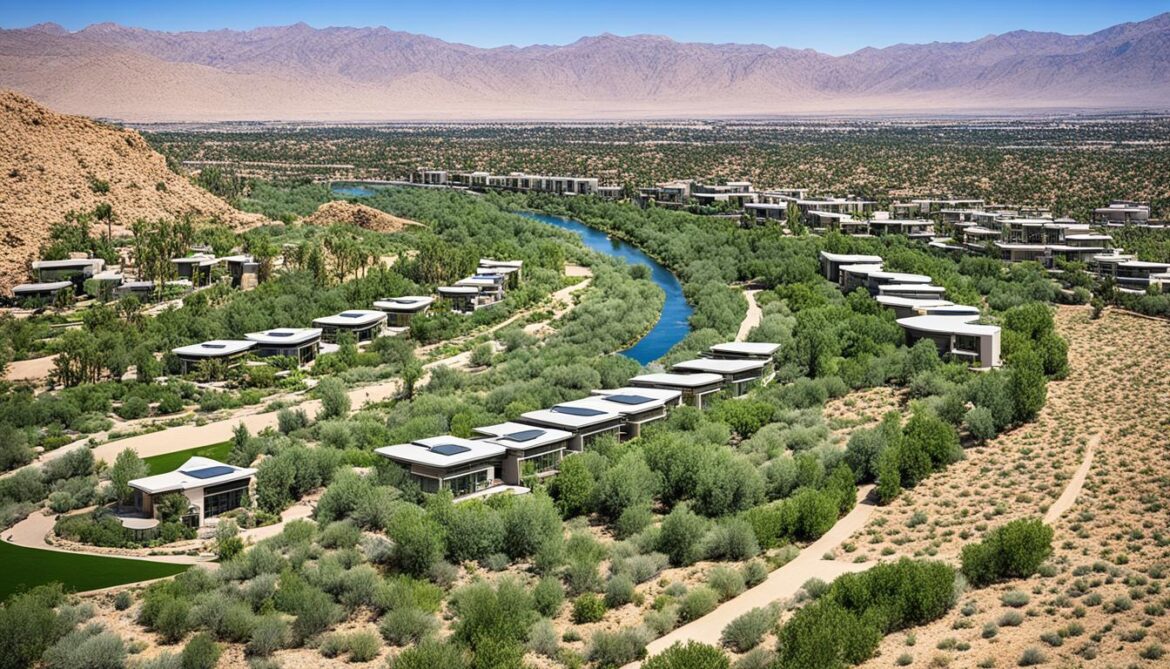
Institutional Collaboration Efforts
Various institutions are collaborating to enhance conservation efforts in Mauritania:
| Institution | Focus Areas |
|---|---|
| National Agency for Protected Areas Management (ANAP) | – Management of wildlife sanctuaries and protected areas – Conservation planning and implementation – Monitoring and research |
| Mauritanian Society for Nature Conservation (SMCN) | – Public education and awareness campaigns – Community engagement in conservation – Advocacy for sustainable land management |
| International Union for Conservation of Nature (IUCN) | – Technical support and expertise – Conservation policy development – Capacity building |
These collaborations serve as a platform for sharing knowledge, resources, and expertise, fostering a holistic approach to biodiversity conservation in Mauritania.
Conservation Achievements
“Through our collective efforts, Mauritania has achieved significant conservation milestones that demonstrate our dedication to preserving our natural heritage.”
One notable achievement is the establishment of Nouadhibou National Park. This protected area encompasses diverse ecosystems and provides a safe haven for numerous plant and animal species. Nouadhibou National Park showcases the success of collaboration between government agencies, international organizations, and local communities in conserving Mauritania’s biodiversity.
To build on these achievements, ongoing efforts are focused on expanding protected areas, promoting sustainable practices, and increasing public engagement in conservation. By continuing these collaborative endeavors, Mauritania is paving the way for a sustainable future where wildlife and ecosystems can thrive.
Conservation Achievements in Mauritania
Mauritania has made remarkable conservation achievements with the establishment of Nouadhibou National Park. This protected area has become a vital habitat for endangered species and plays a significant role in preserving the country’s biodiversity. Nouadhibou National Park stands as a testament to Mauritania’s unwavering dedication to protecting its natural heritage.

The conservation efforts in Mauritania have led to the creation of Nouadhibou National Park, a sanctuary for endangered wildlife and a haven for the country’s exceptional biodiversity. This park encompasses diverse ecosystems, including coastal areas, wetlands, and rare terrestrial habitats. Through rigorous protection measures and sustainable management practices, Nouadhibou National Park has become an exceptional conservation achievement.
Key Features of Nouadhibou National Park:
- Encompasses over 4,800 square kilometers of protected land
- Home to numerous endangered species, including the vulnerable Dama Gazelle and the critically endangered Slender-horned Gazelle
- Supports a diverse range of ecosystems, including coastal areas, lagoons, beaches, and rocky substrates
- Provides essential resting and breeding grounds for migratory birds along the East Atlantic Flyway
- Offers visitors the opportunity to experience the beauty and wonders of Mauritania’s natural heritage through eco-tourism activities
Conservation Impact:
“The establishment of Nouadhibou National Park marks a significant milestone in Mauritania’s conservation efforts. By protecting critical habitats and endangered species, the park contributes to the preservation of Mauritania’s unique biodiversity. It serves as a shining example of the country’s commitment to sustainable development and environmental stewardship.” – Dr. Aissatou Meda N’Diaye, President of the Mauritania Wildlife Foundation
Nouadhibou National Park showcases the success of collaborative conservation initiatives between the government, local communities, and international organizations. It highlights the importance of preserving and managing natural resources for future generations, as well as the potential for sustainable eco-tourism to drive local economic development.
| Conservation Achievements | Nouadhibou National Park |
|---|---|
| Protected Area | 4,800 square kilometers |
| Key Species | Dama Gazelle, Slender-horned Gazelle |
| Ecosystems | Coastal areas, wetlands, rocky substrates |
| Migratory Birds | Resting and breeding grounds along the East Atlantic Flyway |
| Eco-Tourism | Opportunity to explore Mauritania’s natural heritage |
Green Hydrogen – AMAN
Mauritania is making significant strides in renewable energy with the AMAN project, one of Africa’s largest green hydrogen projects. The project aims to produce green hydrogen and reduce national unemployment rates. It highlights Mauritania’s commitment to sustainable infrastructure and clean energy alternatives.
The AMAN project is a pioneering initiative that harnesses the power of renewable energy to produce hydrogen through electrolysis. By using renewable energy sources such as solar and wind, the project ensures that the hydrogen produced is clean and free from carbon emissions.
The production of green hydrogen has numerous benefits for Mauritania. Firstly, it serves as an alternative to fossil fuels, supporting the country’s efforts to reduce its carbon footprint. Green hydrogen can be used as a source of clean energy in various sectors, including transportation, industry, and electricity generation.
Furthermore, the AMAN project plays a crucial role in tackling unemployment in Mauritania. The project’s construction and operation create job opportunities, driving economic growth and improving livelihoods. By investing in renewable energy projects like AMAN, Mauritania is not only decarbonizing its economy but also promoting sustainable development.
Benefits of the AMAN project:
- Reduces carbon emissions and mitigates climate change
- Diversifies energy sources away from fossil fuels
- Creates job opportunities and reduces unemployment
- Promotes sustainable development and clean energy alternatives
The AMAN project is a testament to Mauritania’s commitment to a greener future. By embracing renewable energy and investing in projects like AMAN, the country is taking significant steps towards achieving its sustainability goals and reducing its dependence on fossil fuels.
| Key Features of the AMAN project | Impact |
|---|---|
| Production of green hydrogen | Reduces carbon emissions and promotes clean energy |
| Utilizes renewable energy sources | Ensures sustainable and environmentally friendly production |
| Job creation | Reduces unemployment and drives economic growth |
| Contributes to national energy security | Diversifies energy sources and reduces reliance on fossil fuels |
Green Hydrogen – NOUR
Mauritania’s NOUR project is an ambitious and significant green hydrogen initiative that is set to transform the country’s renewable energy landscape. With a strong focus on green hydrogen production, the NOUR project aims to position Mauritania as a key player in the global energy transition towards a sustainable future.
Green hydrogen, produced using renewable energy sources, is a clean and versatile fuel that has the potential to replace fossil fuels in various sectors, including transportation, industry, and power generation. By harnessing the power of renewable energy, Mauritania’s NOUR project is paving the way for a greener and more sustainable energy sector.
The NOUR project embodies the country’s commitment to renewable energy and reducing carbon emissions. By leveraging its abundant renewable resources, such as solar and wind, Mauritania is capitalizing on its natural advantages to produce green hydrogen and contribute to the global fight against climate change.
“The NOUR project highlights the importance of renewable energy in building a sustainable future. By embracing cutting-edge technology and sustainable practices, Mauritania is taking a significant step towards reducing its carbon footprint and becoming a leader in the renewable energy sector.”
The NOUR project is not only environmentally impactful but also economically beneficial. It will create new job opportunities, boost local economies, and contribute to the overall socio-economic development of the country. With renewable energy as its cornerstone, the project aims to foster sustainable growth and improve the quality of life for the people of Mauritania.
The NOUR project marks a paradigm shift in energy production, emphasizing the importance of green hydrogen as a key enabler of a sustainable energy future. By investing in this innovative technology, Mauritania is positioning itself as a frontrunner in the renewable energy sector, showcasing its commitment to sustainable development and contributing to global efforts to combat climate change.
Benefits of the NOUR project:
- Reduces carbon emissions and mitigates climate change impacts
- Creates new job opportunities and stimulates economic development
- Utilizes abundant renewable resources in Mauritania
- Enhances energy security and reduces dependence on fossil fuels
- Paves the way for a sustainable and eco-friendly future
| Green Hydrogen Initiative | Key Aspects |
|---|---|
| NOUR project | Focuses on green hydrogen production for a sustainable energy future |
| Renewable Energy | Leverages abundant solar and wind resources in Mauritania |
| Economic Impact | Creates new job opportunities and stimulates local economies |
| Environmental Impact | Reduces carbon emissions and contributes to climate change mitigation |
Through the NOUR project, Mauritania is embracing renewable energy and sustainable practices, aiming to lead the way in green hydrogen production. This initiative not only sets an example for other nations but also reinforces the country’s commitment to a cleaner, greener, and more sustainable future.
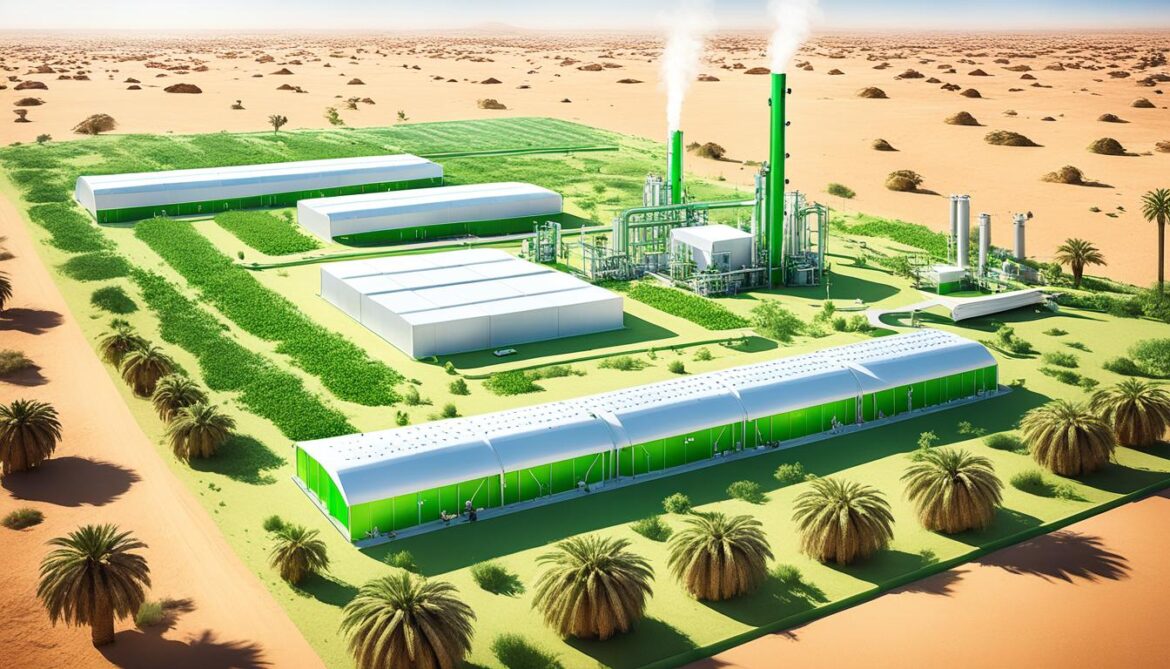
Toujounine – Solar
Mauritania’s Toujounine project marks a significant milestone in the country’s journey towards renewable energy. As the first major solar project in Mauritania, Toujounine showcases the immense potential of solar energy in driving sustainable development and combating climate change.
With a capacity of 50 MW, the Toujounine project plays a crucial role in meeting the growing demand for renewable energy in Mauritania. By harnessing the power of the sun, this solar project contributes to the reduction of carbon emissions and promotes a cleaner, greener future for the country.
Benefits of the Toujounine Project:
- Provides 50 MW of renewable energy
- Reduces carbon emissions
- Contributes to sustainable development
- Promotes energy independence
- Creates job opportunities
The Toujounine project serves as a shining example of how solar energy can transform a nation’s energy landscape. By embracing renewable sources, Mauritania takes a significant step towards achieving its sustainability goals and ensuring a brighter future for generations to come.
“The Toujounine project is a testament to Mauritania’s commitment to renewable energy. By harnessing the power of the sun, we are not only reducing our carbon footprint but also creating a more sustainable future for our country.” – Minister of Energy, Mauritania
With the successful implementation of the Toujounine project, Mauritania sets a precedent for other countries seeking to transition to clean and sustainable energy sources. As solar technology continues to advance, the Toujounine project paves the way for further solar initiatives and reinforces the importance of renewable energy in mitigating climate change.
| Key Statistics | MW Capacity | Carbon Emissions Saved |
|---|---|---|
| Toujounine Project | 50 MW | XX metric tons per year |
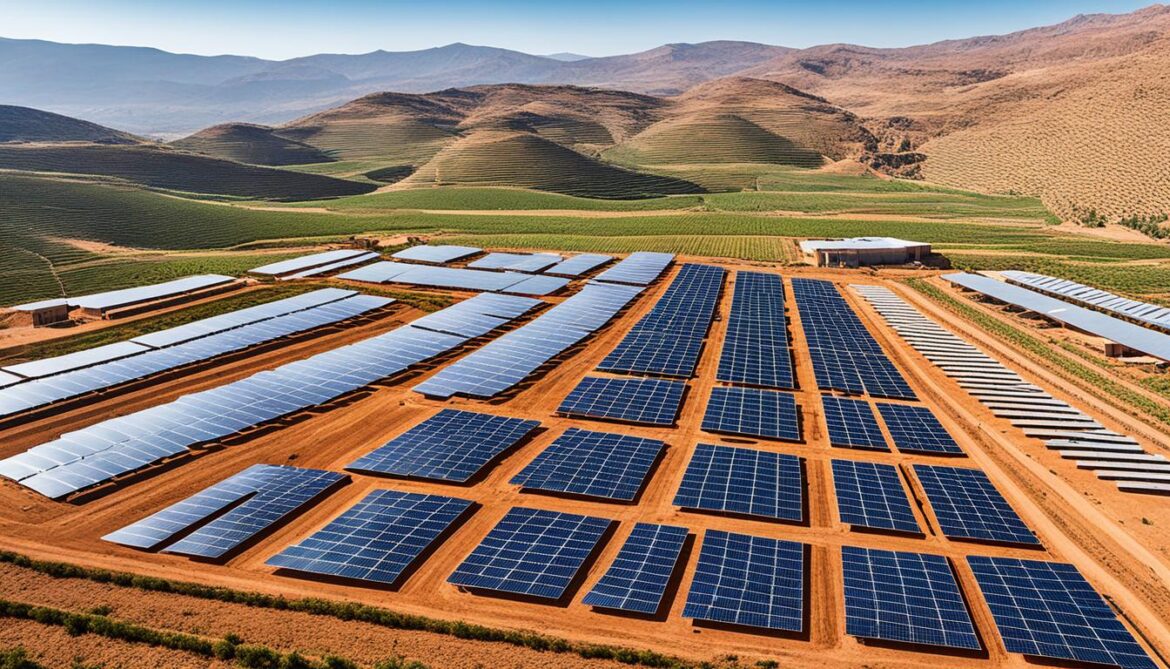
Klima Solar Farm
Mauritania’s commitment to eco-conscious architecture and renewable energy is exemplified by the Klima solar farm. This impressive solar energy project spans an area of 600,000m2, harnessing the power of the sun to supply 15% of the country’s energy needs. The Klima solar farm is not only a testament to Mauritania’s dedication to sustainability but also a shining example of the potential of solar energy in building a greener and more sustainable future.
The Klima solar farm is an architectural marvel, featuring state-of-the-art solar panels that capture the sun’s rays and convert them into clean, renewable energy. By utilizing solar energy, Mauritania reduces its reliance on fossil fuels and significantly lowers its carbon footprint, contributing to global climate change mitigation efforts.
“The Klima solar farm is a game-changer for Mauritania, showcasing the immense potential of solar energy in providing sustainable and environmentally friendly power. This project sets a precedent for other countries to follow suit and embrace renewable energy as a viable solution.” – Dr. Sarah Thompson, Renewable Energy Advocate
With its vast capacity and reliable energy generation, the Klima solar farm helps to meet the country’s growing demand for electricity while reducing the environmental impact associated with traditional energy sources. It serves as a beacon of hope and inspiration for other nations looking to transition towards cleaner and more sustainable energy alternatives.
Advantages of the Klima Solar Farm:
- Reduces carbon emissions and helps combat climate change
- Utilizes a renewable, abundant, and clean energy source – the sun
- Contributes to energy independence and reduces reliance on fossil fuels
- Creates local job opportunities in the renewable energy sector
- Supports sustainable development and a greener future for Mauritania
The Klima solar farm is a shining example of how solar energy can transform a nation’s energy landscape and pave the way for a sustainable future. With its innovative design and substantial contribution to the country’s energy needs, it solidifies Mauritania’s position as a leader in renewable energy adoption and sets the stage for further advancements in the field.
Conclusion
Mauritania’s biodiversity and the built environment are interconnected and essential for achieving sustainable development. The country’s diverse ecosystems and rich wildlife contribute to the ecological balance and serve as a natural heritage. However, these invaluable resources face significant threats, including habitat loss, climate change, and human activities.
Fortunately, conservation efforts and renewable energy projects in Mauritania are making positive strides towards protecting the country’s biodiversity. Wildlife sanctuaries and protected areas have been established to safeguard critical habitats, while research and collaboration efforts are guiding conservation initiatives. Additionally, renewable energy projects like the AMAN and NOUR projects, as well as the Toujounine and Klima solar farms, demonstrate Mauritania’s commitment to sustainable infrastructure and clean energy alternatives.
By prioritizing conservation, sustainable practices, and renewable energy, Mauritania can pave the way for a resilient and eco-friendly future. Effective conservation strategies, such as sustainable land management and environmental impact assessments, are necessary to mitigate threats to biodiversity. The integration of green infrastructure, along with the development of renewable energy projects, will contribute to a more sustainable built environment and minimize the environmental impact.
In conclusion, Mauritania has a unique opportunity to protect its biodiversity, promote sustainable development, and become a global leader in conservation and renewable energy. By investing in both the protection of its natural resources and the development of sustainable infrastructure, the country can ensure a thriving ecosystem and a better future for generations to come.



